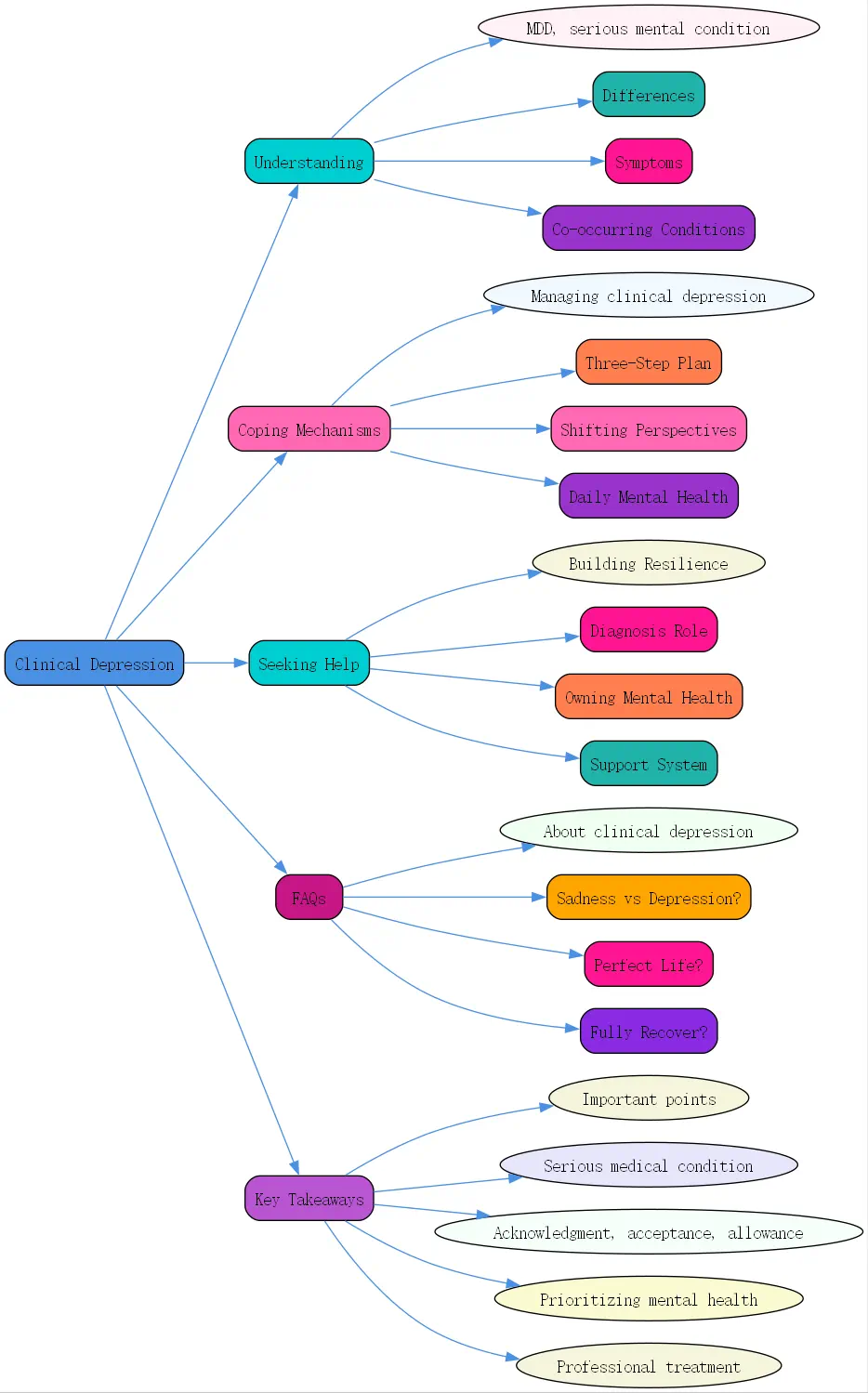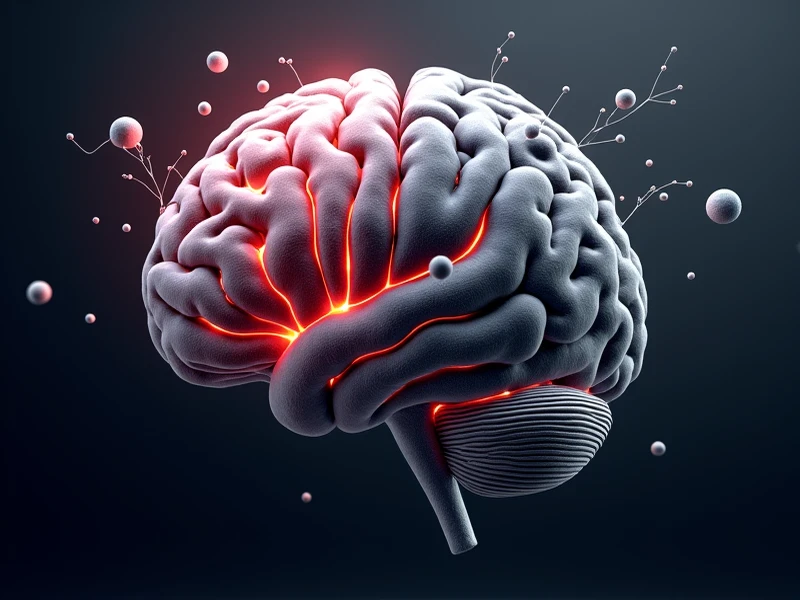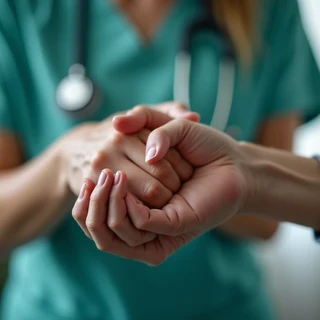Understanding Clinical Depression

Clinical depression, also known as Major Depressive Disorder (MDD), represents a serious mental health condition that profoundly affects thoughts, feelings, and behaviors. Unlike occasional sadness or temporary “”blues,”” clinical depression involves persistent symptoms that significantly impair daily functioning.
Clinical Depression vs. Depression: Key Differences
Defining Clinical Depression
Clinical depression is a diagnosed medical condition characterized by persistent feelings of sadness, hopelessness, and a lack of interest in previously enjoyed activities. It’s far more severe and debilitating than regular feelings of sadness or disappointment that everyone experiences occasionally. The distinction is critical—while temporary sadness is a normal human emotion, clinical depression is a medical condition requiring professional intervention.

As described in our reference text, “”The thing about clinical depression, at least in my own experience, is that symptoms aren’t always triggered by a major life event. You can be successful, happy, and feel everything is going right for you until that dark cloud appears.””
Distinguishing Features of Clinical Depression
When comparing depression vs clinical depression, several key factors emerge. Clinical depression typically lasts for at least two weeks and includes symptoms that persist nearly every day. It often appears regardless of life circumstances—affecting even those who might outwardly seem to “”have it all.””
The reference text perfectly illustrates this paradox: “”On the outside, you would have seen a straight-A student, someone with a very active social life and a promising athletic career ahead of her. On the inside though, there was a girl who was battling an overwhelming depression, having constant suicidal ideation, and ultimately looking for anything that would numb the pain.””
The Spectrum of Depressive Disorders
Depression exists on a spectrum, with clinical depression representing one of its most severe manifestations. Other forms include persistent depressive disorder (dysthymia), seasonal affective disorder, and postpartum depression. Understanding where one falls on this spectrum is crucial for appropriate treatment.
Clinical depression differs from milder forms of depression in its intensity, duration, and impact on functionality. While someone with mild depression might still manage daily responsibilities, clinical depression often makes even basic tasks feel insurmountable.
Symptoms and Personal Experiences with Clinical Depression
Emotional and Psychological Symptoms
Clinical depression manifests through profound emotional and psychological symptoms. These often include persistent sadness, emptiness, hopelessness, worthlessness, guilt, irritability, and difficulty experiencing pleasure in previously enjoyable activities.
The reference text describes this experience vividly: “”I first met my black cloud when I was 14 years old… there was a girl who was battling an overwhelming depression, having constant suicidal ideation, and ultimately looking for anything that would numb the pain.””
Physical Manifestations of Depression
Beyond its emotional impact, clinical depression affects physical health. Common symptoms include chronic fatigue, sleep disturbances (either insomnia or excessive sleeping), appetite changes, weight fluctuations, and persistent physical pain without clear cause. These physical symptoms often compound the emotional burden, creating a cycle that’s difficult to break.
The Impact of Stigma on Seeking Help
The stigma surrounding mental illness, particularly clinical depression, often prevents individuals from seeking help. As noted in the reference, “”Beyond all the suffering that comes with mental illness, there was the infamous stigma that left me feeling ashamed, weak, and isolated.””
This stigma creates additional layers of shame and isolation. Many people suffering from clinical depression hide their symptoms, believing they don’t have a “”right”” to feel depressed, especially if their lives appear successful or privileged from the outside.
Clinical Depression and Co-occurring Conditions
The Connection Between Depression and Anxiety
Clinical depression frequently coexists with anxiety disorders. This combination can intensify symptoms and complicate treatment. Recognizing and addressing both conditions simultaneously is essential for effective management.
Substance Use and Self-Harm in Clinical Depression
Many individuals with clinical depression turn to substance use or self-harm as coping mechanisms. The reference text mentions, “”I was consistently forcing myself to be the person that everybody thought I was, then I would come home and break down by myself.””
This pattern of masking symptoms during the day while struggling privately often leads to unhealthy coping strategies. Understanding these connections helps in developing comprehensive treatment approaches.
Suicidal Thoughts and Ideation
Perhaps the most serious aspect of clinical depression is the increased risk of suicidal thoughts and behaviors. The reference text candidly acknowledges “”constant suicidal ideation”” and describes the condition as “”something that completely clouds your thoughts, feelings, and behaviors.””
This reality underscores why clinical depression should never be minimized or left untreated. It represents a medical emergency requiring immediate professional intervention.
Coping Mechanisms and Strategies for Managing Clinical Depression
The Three-Step Plan: Acknowledgment, Acceptance, and Allowance
Acknowledgment: Recognizing and Naming the Illness
The first step toward managing clinical depression involves acknowledging its presence and nature. As described in our reference, “”After masking my illness for many years, it was a big leap for me that I was someone who was suffering from a mental illness, someone who needed medication to remain stable.””
Acknowledgment means recognizing that what you’re experiencing isn’t simply a bad mood or personality flaw but a legitimate medical condition. This recognition provides clarity and direction for treatment.
Acceptance: Understanding the Unavoidable Hard Days
The second step involves accepting the reality of clinical depression and its impacts. “”I am diagnosed with clinical depression, and that means that some days are just going to be really hard. I’ve accepted that these are the circumstances that are sometimes unavoidable, debilitating, and frequent in my day-to-day life.””
Acceptance doesn’t mean resignation; rather, it means understanding the nature of the condition and preparing appropriate responses. This mindset reduces the additional suffering that comes from fighting against or denying the reality of depression.
Allowance: Permitting the Presence of the “”Black Cloud””
The final step involves allowing the depression to exist without judgment or resistance. The reference text explains this counterintuitive approach: “”After simply acknowledging and accepting that it’s there, I need to allow it to be there. While this may sound like I’m giving away my power, it actually produces the opposite effect.””
By allowing the presence of depression without struggling against it, individuals can conserve energy for healing and implementing effective coping strategies rather than exhausting themselves in futile resistance.
Depression vs Clinical Depression: Shifting Perspectives
Reframing the Relationship with Depression
Understanding the difference between depression and clinical depression helps in reframing one’s relationship with the condition. Rather than viewing it as a personal failure or weakness, recognizing clinical depression as a medical condition shifts the perspective toward treatment and management.
BrainTalking experts suggest that this perspective shift can be transformative, reducing self-blame and opening pathways to more effective treatment approaches.
Finding Peace and Strength in the Midst of Symptoms
Even amid clinical depression, finding moments of peace and developing inner strength remains possible. The reference text describes this process: “”I know what this is. It sucks, it’s hard, it’s scary, but you have gotten through this before, and you will get through this again.””
This mindset offers hope while acknowledging difficulty—a balanced perspective that avoids both despair and toxic positivity.
The Importance of Self-Awareness and Personalization
No single approach works for everyone with clinical depression. As noted, “”The thing with mental illness is that it affects everyone differently. There isn’t a one-size-fits-all approach to matters as complex as these.””
Developing self-awareness about personal triggers, symptoms, and effective interventions allows for a tailored approach to managing clinical depression.
Practical Tips for Daily Mental Health Management

Self-Assessment: Body Scans and Energy Level Checks
Regular self-assessment helps in monitoring clinical depression symptoms and implementing timely interventions. The reference text describes a simple but effective practice: “”Every day I start with this question—I do a body scan and I ask myself questions: is my black cloud here? Where are my energy levels at? What do I need today?””
This practice builds mindfulness and creates space for thoughtful responses rather than automatic reactions to depressive symptoms.
Prioritizing Mental and Emotional Needs
Clinical depression often leads individuals to neglect their basic needs. Intentionally prioritizing mental and emotional well-being becomes essential. As noted, “”When we write those to-do lists though, we’re forgetting about one of the most crucial aspects of our entire existence—the fact that we are humans first.””

This means acknowledging mental health needs as legitimate priorities rather than optional luxuries.
Incorporating “”Me Time”” into Daily Routines
Scheduling regular self-care activities supports overall mental health. These activities might include reading, gentle exercise, time in nature, creative expression, or simply resting. The key is consistency and commitment to these practices, especially during difficult periods.
Clinical Depression: Seeking Help and Building Resilience
The Role of Diagnosis and Professional Support
Finding Validation and Comfort in Diagnosis
Receiving a clinical depression diagnosis often brings complex emotions. The reference text describes this experience: “”Receiving the diagnosis brought on a whirlwind of emotions… at first it made sense… then I felt shame… then came the fear, sadness, and embarrassment, but also the validation, comfort, and insight that I was so desperately lacking.””
While initially challenging, diagnosis typically provides clarity, validation, and access to appropriate treatment options.
Therapy and Medication Options for Clinical Depression
Treatment for clinical depression usually involves psychotherapy, medication, or a combination of both. Evidence-based therapies like Cognitive Behavioral Therapy (CBT) and Interpersonal Therapy have proven particularly effective, while various antidepressant medications can help regulate brain chemistry.
According to BrainTalking specialists, finding the right treatment combination often requires patience and collaboration with healthcare providers.
Overcoming the Fear and Shame Associated with Treatment
Many individuals avoid treatment due to fear or shame. Overcoming these barriers requires recognizing that seeking help represents strength, not weakness. The stigma surrounding clinical depression continues to diminish as understanding grows, making treatment increasingly accessible and acceptable.
Depression and Clinical Depression: Owning Your Mental Health
Sharing Personal Experiences to Break Stigma
Sharing personal experiences with clinical depression, when appropriate and comfortable, helps reduce stigma and normalize mental health discussions. As the reference text demonstrates, personal stories can provide insight, comfort, and guidance to others struggling with similar challenges.
Advocating for Mental Health Awareness
Advocacy for mental health awareness and improved resources benefits both individuals and communities. Understanding the distinctions between depression vs clinical depression enhances public knowledge and encourages appropriate help-seeking behaviors.
Creating a Unique and Powerful Approach to Living with Depression
Ultimately, each person must develop their own approach to living with clinical depression. The reference text describes this process: “”I truly believe that I have developed a really unique and powerful approach to living with clinical depression… This was my way of owning my mental illness and making the best out of this unfortunate situation.””
This personalized approach combines professional guidance with individual insights and preferences.
Building a Support System and Finding Connection
The Importance of Open Communication
Open communication with trusted individuals provides crucial support during depressive episodes. Being able to say, “”My black cloud is here today. I’m not feeling the best. I might need some time to sit with this,”” allows for understanding and appropriate assistance.
Connecting with Others Who Understand
Finding community with others who understand clinical depression can be transformative. Whether through support groups, online communities, or individual connections, these relationships reduce isolation and provide validation.
Seeking Help When Symptoms Become Overwhelming
Despite management strategies, clinical depression symptoms sometimes become overwhelming. Recognizing when additional help is needed—and accessing it promptly—remains essential. As the reference text acknowledges, “”I’m definitely not saying that I’m cured or that anytime my black cloud comes over me, I know exactly what to do.””
Professional support should be sought immediately when symptoms intensify, particularly if suicidal thoughts emerge.
Frequently Asked Questions About Clinical Depression
What’s the difference between feeling sad and having clinical depression?
Sadness is a normal, temporary emotion typically triggered by specific events or circumstances. Clinical depression, however, involves persistent symptoms (lasting at least two weeks) that significantly impair daily functioning. While sadness naturally resolves with time, clinical depression typically requires professional intervention. The difference between depression and clinical depression often lies in severity, duration, and impact on functionality.
Can someone have clinical depression even if their life seems perfect?
Absolutely. Clinical depression is a medical condition involving brain chemistry, genetics, and other biological factors—not merely a reaction to difficult circumstances. Many individuals with clinical depression have outwardly successful, privileged lives yet struggle intensely with the condition. This misconception often adds to the shame and isolation experienced by those suffering with clinical depression.
Is it possible to fully recover from clinical depression?
While clinical depression is treatable, many individuals experience it as a recurring condition requiring ongoing management. With appropriate treatment—including therapy, medication when indicated, lifestyle changes, and support systems—most people with clinical depression can achieve significant symptom reduction and improved quality of life. Some experience complete remission for extended periods, while others develop effective long-term management strategies.
Key Takeaways
- Clinical depression is a serious medical condition distinct from temporary sadness or mild depression
- The three-step approach of acknowledgment, acceptance, and allowance offers a framework for managing clinical depression
- Regular self-assessment and prioritizing mental health needs supports overall wellbeing
- Professional treatment, including therapy and/or medication, plays a crucial role in managing clinical depression
- Building a personalized approach and support system helps in living effectively with clinical depression
- Understanding the differences between depression and clinical depression helps reduce stigma and encourages appropriate help-seeking




